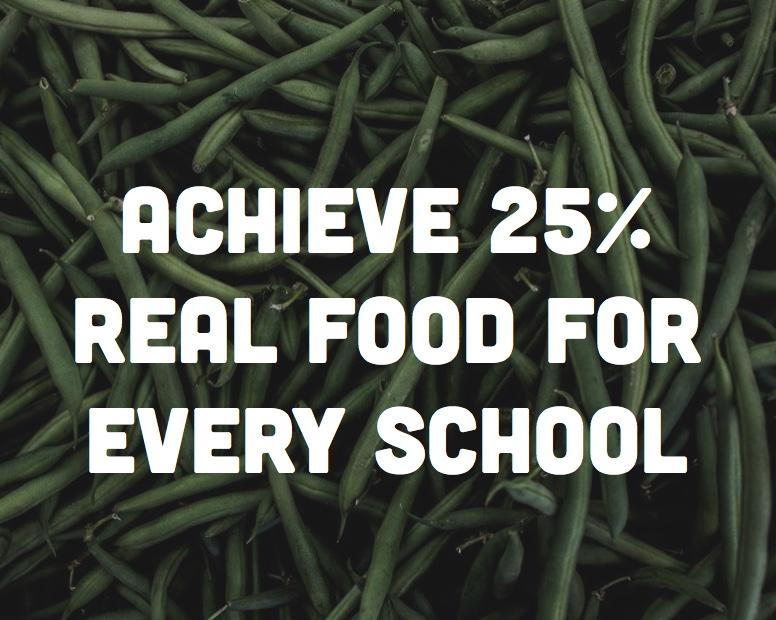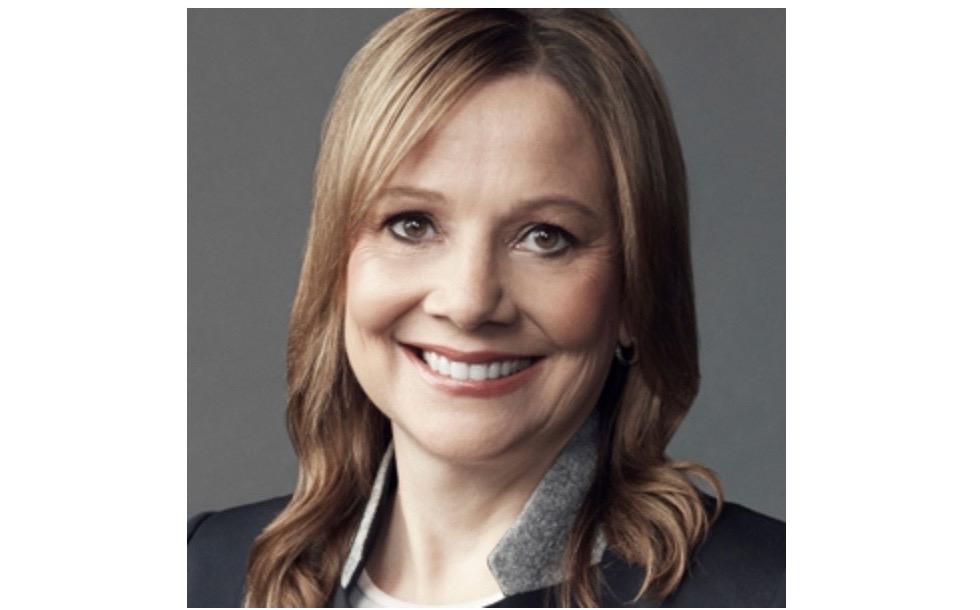Why Everyone Should Care About Census 2020


“Not very long ago some one invented the assertion that there were only “four hundred” people in New York City who were really worth noticing. But a wiser man has arisen – the census taker....” -- O. Henry (1910)
Much has changed since the 1910 census when American author O. Henry penned those famous lines, but many misconceptions around the value of the U.S. census remain.
According to a study conducted by the Pew Research Center before the most recent census in 2010, the majority of Americans saw the country’s federally mandated tally of its residents as a good thing. Sixty percent said they saw the process as “very important,” with 84 percent affirming that they knew the federal census took place every 10 years. Over half of respondents reported understanding that local communities benefit both directly (through federal financing) and indirectly (through congressional representation) when residents participate in the census process.
However, the survey data revealed that not everyone was aware of the greater purpose of the census or understood how the data is used.
One fifth of the respondents didn’t understand the value of the census when it came to ensuring their votes were counted, their roads fixed, and enough federal dollars were allocated to support medical services. More than one-third of survey respondents either thought the census helps the federal government locate and arrest illegal immigrants, or didn’t know that there are privacy laws in place controlling what census data can be used for.
“Census data is probably the most important data that no one has heard of,” said Gary Bass, executive director of the Bauman Foundation, a nonprofit, nonpartisan foundation working to ensure the 2020 census of U.S. residents is both comprehensive and accurate.
It’s important enough that more than 70 philanthropic organizations across the country have joined together to encourage residents to participate in the 2020 census. Funding for the initiative is being provided by a wide spectrum of organizations, including Silicon Valley Community Foundation (SVCF), the Pew Charitable Trust, and the Bauman Foundation, which see value in making sure that residents understand the importance of participating.
“Even if you don’t know you are using [census data], you are.” said Bass. “For many of us at the community level, it is the color of our democracy. If we get the data wrong [in the 2020 census], we distort democracy for the next decade.”
Bass pointed out that the statistics we read in newspaper articles, the research that influences what we buy, and even the data about the neighborhoods in which we choose to rent or buy a house, often has its roots in census data.
That’s because the census plays a uniquely crucial role in how the country operates. It provides grassroots data that allows federal, state, county and city governments to allocate funding, resources and federal representation. “The census guides the distribution of at least $700 billion in federal funds for programs. Everything from Medicaid to Head Start,” said Bass, “And it ensures there is enough money for school programs and new school construction.”
Hard-to-count communities
Carrying out a complete and accurate census of the population is a challenging undertaking, according to Gina Dalma, vice president of government relations and special adviser to the CEO and president at SVCF.Communities including new immigrants, individuals experiencing homelessness, young children, disabled individuals, and other marginalized populations are often undercounted. Language barriers, suspicion of the government, and other barriers can hinder participation. Nowhere is this more true than in the state of California, where more than a quarter of the residents are immigrants and some 44 percent of residents speak a language other than English at home.
“California has the majority of hard-to-count communities in the country,” explained Dalma. “It’s an incredibly diverse state that’s hard to count, yet the state will not receive the funding it deserves if we don’t count our people accurately.”
Funding the census
According to Terri Lowenthal, a consultant specializing in U.S. policy and census issues, underfunding for the 2020 census is exacerbating those challenges and may make it hard to ensure that those hard-to-count communities are included. And that funding shortfall, she believes, comes from Congress’ misunderstanding of just what it takes to accurately – and fairly – count the country’s growing number of residents.“There has been insufficient, uncertain, and frequently late annual funding for planning and preparing for the 2020 census throughout this decade,” said Lowenthal, who noted that, “It does take a full ten years to research, test, design, and conduct a census, and then disseminate the data.” It also requires ample funding.
According to a report filed by the General Accounting Office (GAO) in May of this year, the cost of conducting the country’s decennial census has increased each decade. With the lifecycle costs of the 2010 census reaching an unprecedented $12.3 billion, in 2017 Congress decided not to increase the budget for the 2020 census and allocated the same amount as had been spent during the previous enumeration.
Since that time, another $3 billion has been added to the Bureau’s coffers. But the GAO has warned that it still has “serious concerns about the Bureau’s ability to conduct a cost-effective count of the nation,” which includes testing some questions in public scenarios prior to the actual census.
“Because of those funding shortfalls or delays, the Census Bureau has been forced throughout this census cycle to delay, cut back or even cancel important tests and preparations,” Lowenthal said. She also noted that, according to the U.S. census clock’s estimations, the country’s population will have grown by more than 20 million people since the 2010 census.
And that is part of why local organizations, national foundations, and advocates like SVCF, the Bauman Foundation, The Leadership Conference on Civil and Human Rights, Voto Latino, and others are marshaling efforts now to ensure communities take part in the process and adequately educate their residents about how the census works.
Lowenthal pointed out that unlike many government tasks, the census cannot be delayed and must take place every ten years according to the Constitution. With a lack of timely, sufficient resources at the federal level, local communities must assist with education and outreach efforts to ensure their residents are counted.
“We believe the Census Bureau is really, really unprepared to prevent shortcomings,” said Dalma, citing reduced efforts to pretest questions in hard-to-count communities in rural settings in locations including Puerto Rico, West Virginia, Washington State, and First Nations reservations in the Dakotas, combined with an ongoing effort by the Trump administration to question citizenship status.
Who is a resident?
The U.S. Constitution lays out the criteria for who should be counted in the census.According to Amendment 14, Section 2 of the Constitution, state populations are to be counted “according to their respective numbers, counting the whole number of persons in each state.” Many experts who have weighed in over the years to note that the one thing the census does not ask for is a resident’s citizenship. Doing so could discourage immigrants -- both documented and undocumented -- to participate in the census and make it harder to determine the actual population living in the state. And that discrepancy could make it harder to ensure states get fair representation.
But in March of this year, Commerce Secretary Wilbur Ross added a question requiring participants to answer whether they are citizens of the United States or not. According to Bass, the commerce secretary was warned by the Census Bureau that in its estimation, adding such a question could work against the efficacy of the census and according to a memo written to Ross, “harms the quality of the census count.”
Lowenthal said the Supreme Court as recently as two years ago confirmed that the Constitution requires "a census that counts everyone living in the United States regardless of their citizenship or legal status."
“[The founding fathers] envisioned a democracy where elected officials represent everyone, regardless of whether they can vote. We have to remember children don’t vote, for example,” Lowenthal said, "but they do deserve representation."
Trusted messengers
"The answer to these challenges begins at the local level," said Dalma, urging companies and nongovernmental organizations to use trusted messengers to engage with communities and dissipate fear around the census.She said companies can play a crucial part in a number of ways, including by becoming funders for on-the-ground education and publicity campaigns. They can also educate their workers and consumers about the important role that census data plays in building resilient communities.
The 2020 census will be the country’s first-ever digital census, offering an opportunity for residents to respond online as well as by mail. To capture the data from as many communities as possible, the online survey will be available in 12 languages including English. It will also be accessible in Braille, and language assistance guides will be on standby to help people who speak 59 other languages. This will also be the first year that participants will be able complete the census by phone.
Dalma said there’s a special need for tech companies and those that have specific talents in today’s digital marketplace, since they are often the biggest users of census data.
“We have heard of a small nonprofit organization that is using Snapchat to get the word out. We don’t have the expertise.” said Dalma, matter-of-factly. “Companies do.”
And often it’s the small measures that make the biggest impacts. Lowenthal said last census a Long Island power company printed reminders on their bills to spur customers to fill out census forms. Other companies printed similar messages on pay stubs and banners to remind residents that it was important to participate.
“There are many ways businesses big and small, publicly traded and privately traded can play a part in this really unique national event,” said Lowenthal. “A successful census is in businesses’ best interest.”
For more information relating to Census 2020, visit: The Census Bureau The Census Project Funders Committee for Civic Participation Voto Latino Arab American Institute
Image Credit: Adobe Stock
Natural Gas Stumbles as Hydrogen Picks Up the "Clean" Fuel Flag


New evidence about methane emissions has been stripping the veneer of sustainability from natural gas, and that could mean both good and bad news for hydrogen fans. The good news is that new technology is bringing the global economy closer to renewable hydrogen as an alternative to natural gas as well as petroleum and other fossil-sourced fuels.
The bad news: much of the world's hydrogen still comes from its conventional source -- natural gas.
First, The Bad News
This week's editorial in The New York Times underscores the grim reality behind the natural gas hype. Methane is the primary component of natural gas, and it is a powerful contributor to global warming.
Yes, natural gas is "cleaner" than coal when it burns. The problem is that significant methane leakage occurs all along the supply chain, from the wellhead to transportation, storage, and local distribution networks.
In a harbinger of things to come, the Rocky Mountain Institute is gearing up a campaign to get property owners and other stakeholders interested in eschewing gas appliances in favor of electric, based on both indoor and outdoor emissions issues.
Renewable Hydrogen Steps In
Hydrogen is abundant but it does not exist by itself in nature, hence the reliance on natural gas.
The good news is that fossil gas is not the only potential source for hydrogen. One good example is water. Think H2O and you're on the right track.
The supply of water is practically limitless and it can be accessed without expensive -- and disruptive -- drilling.
The problem is how to "split" the hydrogen out of the water. The basic method, called electrolysis, involves applying an electrical current. That necessarily involves copious amounts of fossil fuel to produce the electricity -- at least it did, until now.
With the advent of low cost wind and solar power, the dependence on fossil fuel for water-splitting is dissolving. It's also worth noting that wind and solar power can be distributed around the globe in far more regions than hydropower, which is the only source of renewable electricity previously available in bulk.
Biogas is also coming along as another source of renewable hydrogen, too.
One other important thing to note is that hydrogen sourced with the help of renewable energy (aka power-to-gas) is, in effect, a large scale energy storage solution. That's especially clear in the case of wind power. During periods of low consumer demand a wind farm can keep operating at optimal capacity as long as an industrial customer -- for example, a water-splitting facility -- can pick up the slack.
Now, The Good News: Railway Edition
With all this in mind, let's take a look at some recent developments that are pushing the demand for renewable hydrogen.
Last Sunday the France-based railway manufacturer Alstom celebrated the launch of the Coradia iLint in Germany, its first zero emission hydrogen fuel cell passenger train to go into service.
That's a significant development on its own, since the new train replaces diesel. What's even more significant is Alstom's interest in renewable H2, which it displayed a few years ago by partnering with the aptly named company Hydrogenics.
The Canada-based company is already known for its power-to-gas operations in Europe. Earlier this summer it launched its first North American power-to-gas facility, in Ontario.
Just this week, the company announced that it has joined a consortium to develop a major power-to-gas project in Norway, which neatly illustrates the interplay between wind farms and H2 energy storage.
The consortium will deliver a 2.5-megawatt, electrolysis-based energy storage system that will operate in tandem with the 45-megawatt Varanger Kraft wind farm in Rggovidda, Norway. Here's the rundown from Hydrogenics (break added for readability):
Varanger Kraft's wind farm, located in Raggovidda, is already one of the most efficient in Europe. However, due to limitations within the local transmission grid, the project's capacity of 200 megawatts cannot currently be realized.The consortium - named Haeolus - will enable the production of clean hydrogen using some of the excess power produced from wind in the region.
More Good News: Automobile Edition
For those of you new to the topic, fuel cell cars (and fuel cell trains, for that matter) are electric vehicles. The difference is that they don't depend on electricity stored in a battery. Fuel cells generate electricity on-the-go, by shepherding a reaction between hydrogen and oxygen.
Toyota is widely acknowledged as the leader in the fuel cell automobile sector with its much publicized Mirai. The company has already introduced a renewable energy angle as well.
The fuel cell passenger car sector is still lumbering along slowly, but Hyundai is among the auto makers that are beginning to generate more buzz.
Earlier this summer Hyundai introduced its next-generation fuel cell passenger car, the NEXO. For now the car will only be sold in California, where it is being pitched as a long range EV that can fuel up in only five minutes -- just like a gasmobile.
Around the same time, the company also announced a fuel cell development partnership with Audi. So far Audi has only dipped its toe into the fuel cell EV concept, and a little nudge from Hyundai's supply chain could help the company get its concept off the drawing board and into the street.
The new collaboration also involves affiliates including Kia and Volkswagen, with the idea that cross-licensing and patent sharing will accelerate development of more efficient, less costly fuel cells.
Btw, that five-minute fueling time is a big advantage for fuel cells EVs over battery EVs, but if you're wondering where the fueling stations are, that's a good question.
Here in the US, the national hydrogen fueling infrastructure is razor-thin. However, California and several other states have taken the lead in pushing the hydrogen economy forward.
That includes a renewable energy angle. California's fuel station strategy, for example, calls for at least 33% renewable hydrogen.
More Good News: Trucker Edition
Speaking of Hyundai, last week the company unveiled its plans for a fuel cell long haul semi truck.
Notably, Hyundai's announcement focused narrowly on the design of the new fuel cell truck:
[The] fuel cell electric truck boasts distinctive design which sets it apart from other Hyundai commercial vehicle line-up. The truck aims at simple and clean design which is also aerodynamically efficient with a spoiler and side protector.The front grille symbolizes hydrogen through geometric shapes, giving the vehicle a unique and powerful look. The vehicle emanates an eco-friendly look with an iconic blue color application and a bold side body graphic on the container, which visualizes its dynamic character.
That could mean any number of things, but let's say for the sake of argument that businesses and fleet managers are already aware of the advantages of fuel cells over diesel. Hyundai is betting they would be attracted to a fuel cell truck that provides them with a high-visibility way to project a green image all over their driving territory.
The new industry body will help accelerate the hydrogen economy by developing the various regulations and industry codes needed to support the introduction of the new fuel source here.The announcement cements Hydrogen Mobility Australia’s position as the official industry body representing a broad industry group encompassing car manufacturers, energy and technology companies.
Much more is afoot in the hydrogen fuel cell field, from technology improvements to robotic applications, so stay tuned for more on that.
Also, keep an eye on the geopolitical perspective as natural gas fights to maintain its grip on the global energy ledge.
One thing to look for: how Europe's power-to-gas initiatives could edge Russia (and the US) out of the EU energy market.
Photo: Coradia iLint fuel cell train via Alstom.
Business Leadership as a Calling


Behind the unending stream of headlines about executive malfeasance, there’s a lot of thought and action going on in progressive quarters about how to improve leadership training so that business can perform better. Here’s one of those headlines that caught my eye: “Management as a Calling,” the header for an article published recently in the Stanford Social Innovation Review. Calling is most often used to describe mission-driven occupations, such as the ministry, social work, or education i.e., work with “meaning” as opposed to a career or job. What does calling imply when used in reference to leadership in business? What could “meaning” mean in business practice?
Author Andrew J. Hoffman offers some intriguing answers. He argues that the traditional idea of management must be transformed if business is to reach its enormous potential to contribute to the social good. As the Holcim (U.S.) Professor of Sustainable Enterprise at the University of Michigan, he also asserts that this transformation must begin early, centered on a radically redesigned curriculum in the business schools that are preparing the next generation of business leaders.
“Business’s capacity to transform society is only as great as the schools that train its future leaders,” writes Hoffman. “This demands that business schools reform their vision to promote values of business serving society in order for students to see business as a true calling rather than simply a career.”
Hoffman’s central question is a deep one: “How might we assure that future business leaders protect the public interest and not just their own profit?” That’s the kind of speculative talk you can hear now at conferences, in workplaces, and in the classrooms of our leading business schools. As governments grow increasingly unable to assert leadership, business has increasingly stepped up to address social and political issues. To assert positions on these issues while guiding a business to profitable purpose requires serious leadership skills.
How can we achieve this management ideal? Hoffman concludes “What we need to do is provide MBA students with the intellectual building blocks with which to use the power of business to find creative solutions to our emergent problems.” Future business managers are to be educated to think of their work as a vocation, a “calling” to serve society, not just as a career for private purpose and personal gain.
Interestingly, Hoffman bypasses the usual corporate social responsibility (CSR) and sustainability tropes to propose an MBA curriculum built on seven ways to educate and build “the whole manager.” Among his action items, two point to building a strong conceptual framework for future business leaders who will be expected to take stands on the key issues of the day: “Offer more critical examination of the ‘purpose’ of the corporation” and “add social and political science to the MBA curriculum.”
Hoffman quotes data: “One survey shows that 88 percent of business school students think that learning about social and environmental issues in business is a priority. Another survey shows that 67 percent want to incorporate environmental sustainability considerations into whatever job they choose.”
He also quotes an ideal model, Unilever CEO Paul Polman, who has said that business needs to take on a broader role to “serve society” by placing “the greater good ahead of self-interest.”
Polman’s imminent retirement underlines Hoffman’s thesis, and gives it urgency: MBA education must perform an immediate re-set so that future business leaders will be prepared for the unexpected challenges of doing business tomorrow.
Food Companies Urged to Source “Real Food” Locally


The three largest food service companies in the US are being asked to source more products locally and from smaller businesses, and to shun suppliers with irresponsible labour practices.
The campaigners are to mount actions during the coming months to promote policy changes by the three international companies – the UK-based Aramark, Compass Group, and Sodexo, whose headquarters are in France.
Aramark, Compass and Sodexo are being addressed principally because they manage more than half the cafeterias at universities, hospitals and other institutions in the US.
The campaign is being run by the Community Coalition for Real Meals, consisting of three NGOs – the environmental group Friends of the Earth; the Northwest Atlantic Marine Alliance, which encourages more responsible fishing; and the Real Food Challenge, a group that promotes ethical food production and supply.
The rank and file members are mainly farmers, farmworkers and fishers.
The coalition is arguing for shorter journeys from harvesting to the point of consumption so that local producers and owners of smaller businesses benefit instead of multinational corporations.
It believes this change would limit environmental damage from delivery trucks and vans, and reduce trading with the large suppliers that pay their workers and producers a sub-living wage.
Another advantage, maintains the coalition, is that independent producers have higher ethical standards than the big operators, which “rely on harmful practices such as the excessive use of pesticides and fertilizers that damage our health and the environment, and market highly processed, unhealthy food”.
Specifically, the campaigners are asking the food companies to include 25 per cent of what they call “real food” in supplies to university campuses and to switch to seafood provided by local and community-based fishers.
They say that to achieve these objectives the food companies should invest at least (£760,000 (€857,000 $1m) in infrastructure to improve market access for disenfranchised producers, should purchase more from them, and should appoint liaison officers to develop relationships with them.
Julianna Fischer, a community organizer with the Northwest Atlantic Marine Alliance, said: “Each of these companies may claim to support local seafood, but our definitions of local are different.
“We are calling for five per cent of seafood company-wide to be sourced from owner-operated boats and for all production, processing and distribution to be within a 500-mile radius of the institution in which it is being consumed.”
The campaign groups may draw some hope from agreements struck by Aramark and Compass with a workers’ group to improve wages and conditions on farms in Florida eight years ago.
This year, Aramark has announced it will use more sustainable seafood, though Fischer said the company has not made clear exactly what it will purchase.
Photo: Realmealscampaign.org
Brands Taking Stands: Is This a Movement or a Moment?


Considering all that we have experienced over the past 18 months, we are definitely at an inflection point when it comes to the business community deciding what role it has in pursuing social good. More companies have realized they have no choice but to speak out, and even take action, on some of the most volatile political and social issues of our time.
Joining CEOs are athletes who have not taken kindly to orders to “shut up and dribble,” as well as chefs who have been at the forefront of disaster relief from last year’s hurricane in Puerto Rico to this month’s Hurricane Florence in the Carolinas. These public figures have not been shy about taking a stand on environmental, social, and political issues.
To that end, next month at 3BL Forum, we are excited to be holding a Town Hall, sponsored by MSL, that will take a close look at whether this “Brands Taking Stands” phenomenon is a movement or a moment.
“CEOs are being told they need to do more than generate profits, but taking a stand on social issues can be thorny even for those practiced in brand advocacy,” said Dave Armon, CMO of 3BL Media, which is producing 3BL Forum. “Is employee, corporate, investor, and athlete activism simply a reaction to the current political climate or are we in the middle of a transformative moment that will change the corporate landscape for the foreseeable future?”
For three days next month, we will present quite a lineup of business leaders, as well their peers within the nonprofit and government sectors, who are eager to answer that question.
You will not want to miss this lineup - speakers who will talk about corporate activism at the October 25 Town Hall include:
- Sherrie Deans, Executive Director of the National Basketball Players Association Foundation
- Louise Schiavone, a contributing anchor at NPR
- Eli Stokols, White House Reporter, Los Angeles Times and an analyst at MSNBC
- Ron Guirguis, CEO, MSL U.S.
- Jessica Herrera-Flanigan, Executive Vice President, Government and Corporate Affairs at Univision Communications
- Angela Parker, CEO of Realized Worth
- And the moderator for this Town Hall will be veteran corporate responsibility journalist Dirk Olin, who served as editor of CR Magazine and is an ongoing contributor to the op-ed pages of the Washington Post, New York Times, and other leading news outlets.
If you are active in the corporate responsibility space, or are determined to be, make plans now to attend this event designed for corporate responsibility and sustainability practitioners.
The Town Hall is one of dozens of sessions taking place during 3BL Forum, the annual gathering of purpose-driven companies, October 23-25 at MGM National Harbor. The venue is just minutes away from Washington, D.C.
Registration is currently underway, and a 25% off discount is available with the use of the code 3BL2018TOWNHALL.
Business Leadership as a Calling


Behind the unending stream of headlines about executive malfeasance, there’s a lot of thought and action going on in progressive quarters about how to improve leadership training so that business can perform better. Here’s one of those headlines that caught my eye: “Management as a Calling,” the header for an article published recently in the Stanford Social Innovation Review. Calling is most often used to describe mission-driven occupations, such as the ministry, social work, or education i.e., work with “meaning” as opposed to a career or job. What does calling imply when used in reference to leadership in business? What could “meaning” mean in business practice?
Author Andrew J. Hoffman offers some intriguing answers. He argues that the traditional idea of management must be transformed if business is to reach its enormous potential to contribute to the social good. As the Holcim (U.S.) Professor of Sustainable Enterprise at the University of Michigan, he also asserts that this transformation must begin early, centered on a radically redesigned curriculum in the business schools that are preparing the next generation of business leaders. “Business’s capacity to transform society is only as great as the schools that train its future leaders,” writes Hoffman. “This demands that business schools reform their vision to promote values of business serving society in order for students to see business as a true calling rather than simply a career.”
Hoffman’s central question is a deep one: “How might we assure that future business leaders protect the public interest and not just their own profit?” That’s the kind of speculative talk you can hear now at conferences, in workplaces, and in the classrooms of our leading business schools. As governments grow increasingly unable to assert leadership, business has increasingly stepped up to address social and political issues. To assert positions on these issues while guiding a business to profitable purpose requires serious leadership skills. How can we achieve this management ideal? Hoffman concludes “What we need to do is provide MBA students with the intellectual building blocks with which to use the power of business to find creative solutions to our emergent problems.” Future business managers are to be educated to think of their work as a vocation, a “calling” to serve society, not just as a career for private purpose and personal gain. Interestingly, Hoffman bypasses the usual corporate social responsibility (CSR) and sustainability tropes to propose an MBA curriculum built on seven ways to educate and build “the whole manager.” Among his action items, two point to building a strong conceptual framework for future business leaders who will be expected to take stands on the key issues of the day: “Offer more critical examination of the ‘purpose’ of the corporation” and “add social and political science to the MBA curriculum.” Hoffman quotes data: “One survey shows that 88 percent of business school students think that learning about social and environmental issues in business is a priority. Another survey shows that 67 percent want to incorporate environmental sustainability considerations into whatever job they choose.” He also quotes an ideal model, Unilever CEO Paul Polman, who has said that business needs to take on a broader role to “serve society” by placing “the greater good ahead of self-interest.” Polman’s imminent retirement underlines Hoffman’s thesis, and gives it urgency: MBA education must perform an immediate re-set so that future business leaders will be prepared for the unexpected challenges of doing business tomorrow. Want to receive The Brands Taking Stands newsletter by email? Sign up here.
Why a Crystal Manufacturing Company Is Focused on Water Stewardship


You may know Swarovski as the timeless Austrian maker of crystal, which is shown off across storefronts in tony shopping districts worldwide. But besides its famous crystal business, Swarovski also produces optical instruments such as telescopes, telescopic sights for rifles and binoculars (gaze through a pair when hiking, if you ever have a chance!); and the company is also a leading manufacturer of grinding, sawing and drilling tools and machines.
This year, Swarovski and the UCLA School of Theatre, Film and Television partnered to produce Waterschool, a film that discusses the issues surrounding safeguarding the world’s continuing supply of fresh water. The film takes us on a journey with several young female students who live along six of the world’s major rivers – the Amazon, Mississippi, Danube, Nile, Ganges and Yangtze – and highlights the work of Swarovski Waterschool, a community investment program the company established in 2000 that to date has reached almost half a million young people across 2,400 schools worldwide.
The film discusses how teachers and guides at Swarovski Waterschool are empowering citizens to take care of this most valuable resource. As students discover how best to protect water, they pass on their insights to their peers, parents and grandparents.
TriplePundit recently had the opportunity to catch up with Nadja Swarovski, a member of the company’s executive board, to talk about the company’s commitment to water stewardship.
3p: What got Swarovski to get focused on water stewardship in the first place?
NS: The interest in water is rooted in the very origins of Swarovski as a business when the company was first founded by Daniel Swarovski in 1895. The process of using water to craft crystals is a method that was invented and patented by Daniel Swarovski himself – back then, he created a revolutionary electric cutting machine, using hydropower that was used in the production of crystal glass. This allowed crystals to be cut more precisely than by hand.
Water remains an essential resource to produce our different product ranges. For instance, the company’s main manufacturing site at Wattens, Austria, sources a third of its electricity from the site’s hydroelectric plants. As a reflection of the importance placed on water resources throughout our history, Swarovski works to empower future generations to protect the world’s most precious resource.
However, the focus on water also comes from Swarovski’s understanding of its responsibilities as an international brand with a global presence. Our operations have faced, and continue to face, challenges. These range from extreme drought to flooding, and leads to Swarovski playing a deeper role in understanding and managing these impacts. This worldwide reach means that we are aware of the multiple challenges threatening the availability of clean, accessible water.
For that reason, it is important that we are part of the global water dialogue, inspired by the United Nations’ sixth Sustainable Development Goal – clean water and sanitation. We welcome the opportunity that this offers to collectively address the challenges and find solutions to the world’s water supply.
Waterschool is only the latest iteration of this long-standing effort. Through a program of community education, undertaken in locations on some of the world’s biggest rivers, the Swarovski Waterschool initiative helps to inspire young people and their communities to understand and practice sustainable water use.
3p: What are you doing internally at Swarovski to get employees focused on issues such as water stewardship?
NS: Today, water scarcity affects more than 40 percent of the global population, one in nine people still live without clean water close to home, and nearly 1,000 children die every day due to preventable water and sanitation-related diseases. These are harrowing numbers, but numbers that can be prevented through water education, conservation and stewardship.
This is why we established Swarovski Waterschool in 2000 – to date, the Waterschool program has reached almost half a million young people through 2,400 schools worldwide. The experiences of several of the participants are the subject of our new film.
But awareness in itself isn’t enough. We need to ensure that our people, sites and communities are also going above and beyond to protect the world’s water. We collaborate with our stakeholders to create initiatives that ensure fresh water is managed responsibly and water-related challenges are addressed around our production sites.
To achieve this we are tackling the challenges of water scarcity, flooding, pollution and sanitation at our own production locations, cutting the company’s water usage by sourcing 70 percent of the water we need from recycled water across our locations. This recycled water is then treated to local regulations and then returned to the local water source – a good example of this is our site in Pune, India, where we have responded to the region’s extreme drought by achieving smart water usage in a way that leads to near zero water discharge.
Our commitment to water management also extends to our stores – the refurbishment and construction of new stores has the strictest environmental criteria applied to it. In addition, our retail development team ensures that our stores achieve the high levels of efficiency in water management, as well as promoting good practices.
3p: How did Swarovski become connected to UCLA?
NS: I’m pleased we could build on the strong and long-standing relationship that Swarovski has with the leadership of UCLA School of Theater, Film and Television to bring this project to fruition. It gave us the opportunity to work closely with Dean Teri Schwartz, known for her focus on humanistic storytelling and social impact, and Academy Award-nominated filmmaker Lucy Walker who provided guidance to the students who made the film.
I’m thrilled these students were a part of this journey – it gave them an opportunity to be a part of a major global social action campaign to raise awareness, and drive impact and change around one of the most pressing issues of our time, and one that ultimately affects us all.
In case you missed it, you can watch the documentary's trailer here:
Image credit: Swarovski
6 Ways to Engage Millennial Volunteers


From technology to the challenges our communities face, it’s rare that we move on each year without a shift from the status quo.
Volunteering is no different.
Not so long so, during the age of Generation X, those citizens connected with non-profit organizations. However, for Generation X, volunteering was often about philanthropy.
In comparison, many millennials are more hands-on. They frequently want to give more than money, as they want to contribute as they know more about the cause and become emotionally invested. Millennials seek purpose; volunteering is one way for them to find meaning while doing something aligned with their passion while boosting their professional development.
Engaging the Millennials
Compared with everything else on a millennial’s plate, it is essential to link the volunteering activity to a passion the person already has. For example, book-lovers could enjoy recording audio books for the visually challenged.
Many millennials have developed extensive networks and understand the pulse of the online world and know what gets popular. Showing millennials they can make a difference by helping an awareness campaign online — just by liking and sharing — can open their eyes to how the things they already do can be harnessed for good.
6 factors that drive millennials in their volunteering zeal
Honing and developing skills: Offer millennials avenues where they can sharpen existing skills and develop soft skills such as team building, goal setting, problem-solving, and adaptability. The results could assist them in their professional growth, while doing something that will give them a purpose, harness their passion and keep them engaged. Volunteering can also spark a realization in their abilities and interests of which they may have been previously unaware. For example, when Brillio volunteers taught school students 3D design printing, they ended up going beyond their basic skills and learned far more about this new technology – hence a win-win situation.Volunteering during work hours: Such a program requires a work culture that provides both meaningful tasks and connection to the outside world. As millennials make their presence known in more and more corporate leadership roles, they look for organizations that offer them corporate volunteering opportunities. By giving them opportunities to get out and get involved, millennials will feel more connected. At Brillio, we organize our own “TGIF” activities during which employees spend one to two hours every Friday helping students with their school work either in person or via Skype.
Random acts of responsivity: One benefit of volunteering is the impact on local communities. Millennials want to a connection with the places in which they live and work, and one way to make their communities better places is with random act of kindness. Such steps can be something as simple as picking up trash from the side of the road to switching off the lights and fans when there is no one in the room.
Raising funds: Don’t underestimate the power of crowdfunding. Millennials are taking full advantage of this unique opportunity to make their community work reach that much further. They go online, talk about their passions, and gather support and funds for the cause.
Create your own tools: Today, there are online tools that don't just give young people access to information, but also allow them to create their own materials. When they are unable to find an initiative in which they are interested, millennials seek the opportunity and empowerment to strike out on their own. Examples I have seen include the use of digital media to spread awareness on issues like road safety or creating an app for women safety.
Voices on social media: From a young age, millennials expressed themselves, their interests and their causes in various ways on different channels. Their constant connection to the online world has allowed them to be exposed to more issues, which has helped to create a particularly empathetic generation. They want to reach out and help, and their tech-savviness enables them to generate impact while giving them a voice for the causes about which they are concerned.
Brillio’s research
We conducted a survey last year to assess the impact of volunteering at Brillio in order to gain feedback and suggestions so we could improve our programs. The majority of respondents who took part in the survey were millennials. Through the survey we learned:
- 96 percent of employees feel that volunteering has assisted in improving their productivity;
- 96 percent found their stress levels reduced;
- And 94% of employees who participated in volunteer programs were likely to recommend Brillio to a friend or family.
This survey helped us understand the pulse of our employees and identify the gaps in our volunteering. To ensure your volunteering programs are aligned with your employees’ needs and interests, it’s important that you revisit these programs regularly to understand the gaps and realign efforts accordingly. While revisiting your volunteering efforts remember to align them with the three P's that drive the new age workforce — passion, purpose, and professional development.
Image credit: Brillio Technologies
Top Companies Come Together to Fight Climate Risk in Supply Chains


In the age of globalization, corporate supply chains typically stretch around the world. Such complexity means it’s next to impossible for business leaders to assess potential risks at each stage of the value chain—which is especially problematic as water scarcity, extreme weather and other climate-induced impacts become the norm.
Research shows that suppliers, and the companies they serve, are increasingly concerned about climate-related threats: More than 75 percent of global suppliers report climate risks with the potential to generate a substantive change in their business, according to 2018 data from CDP.
In an effort to collectively respond, last week major global companies came together to fortify their supply chains against climate change.
Beverage giant Coca-Cola and consumer packaged goods firm Mars, Inc. are among the first to join the Climate-Resilient Value Chains Leaders Platform. As the name implies, the new digital platform is intended to help companies build more resilient supply chains by identifying and mitigating climate risk.
Business for Social Responsibility (BSR), which launched the platform last Thursday, says there’s a lot at stake in safeguarding supply chains for an uncertain future. As much as 80 percent of global trade is integrated into supply chains, including trade in intermediate goods and services of about $12 trillion annually, the nonprofit says, citing data from the U.N. Conference on Trade and Development. Many of those supply chains move through parts of the world most vulnerable to climate impacts.
Participating companies committed to “develop shared tools and methods that help them prioritize climate resilience,” BSR says. This includes efforts to investigate physical climate risks in their supply chains and help vulnerable supplier communities cope, as well as mitigate their own contributions to climate change in the form of greenhouse gas emissions.
Building on established best practice for corporate climate action, BSR encouraged participating firms to lean on existing tools from groups like the Science-Based Targets initiative and RE100 to get their carbon emissions in check. Companies will share the data they add to the platform as they track and mitigate supply chain risks, in an attempt to accelerate the adoption of climate-resilience measures across the private sector.
“Supply chains, the engines of global growth, are broken,” Barry Parkin, chief sustainability and procurement officer for Mars, said in a statement. “To fix them, we must shift to long-term models for corporate buying that are anchored on building mutuality, reliability, resilience, and risk management into the core of our buying patterns.”
As corporations see the commodities and services they depend upon put at increased risk, they seem more and more willing to share information—even with firms they traditionally view as competitors. The Leaders Platform is just the latest example of this trend, which is also clearly demonstrated in cross-sectional efforts like the We Mean Business Coalition, the We Are Still In climate action collective and even BSR itself, which brings more than 250 companies together to improve social welfare and environmental sustainability around the world.
Ben Jordan, Coca-Cola’s senior director of environmental policy, referenced this shift toward corporate collaboration: “We believe working with other businesses will help us build a resilient supply chain and improve living conditions in vulnerable communities,” he said in a statement announcing Coca-Cola’s participation. “This new BSR leadership platform will help us engage with peer companies to drive action that benefits our communities and our planet.”
Over the last 30 years, an estimated $1 out of every $3 spent on development has been lost to extreme climate events, totaling $3.8 trillion worldwide. Though resilience measures will be costly—estimates range from $140 billion to $300 billion annually by 2030, according to the U.N. Development Program—a growing number of decision-makers in both the public and private sectors now recognize that the costs of doing nothing are too great to stand still.
“These companies are coming together out of a shared understanding that the private sector requires a common, science-based approach to value-chain resilience that will maximize the benefits to communities and business,” BSR Climate Director David Wei said in a statement. “Fortifying supply chains is one of the best ways that companies can act to mitigate climate change-related impacts.”
BSR’s platform is one of many new initiatives launched during the Global Climate Action Summit, which took place September 12-14 in San Francisco.
Other efforts include a $4 billion climate pledge from the philanthropic community, the largest ever philanthropic investment focused on climate change mitigation, to be delivered over the next five years. The Global Green Bond Partnership will help subnational entities, such as companies, cities and states, accelerate the issuance of green bonds. And 21 companies came together on the Step Up Declaration, a new alliance dedicated to harnessing the power of emerging technologies to reduce emissions, among dozens of other initiatives announced a the Summit.
Image credit: Global Climate Action Summit
Socially Responsible Investing: A 25-Year Overview


Every meaningful message needs its dedicated messenger.
For over 25 years, Green Money Journal has been the media voice of the socially responsible investment community. In that time, the publication has chronicled an exponential explosion of action in the field. Today, its insights, informed by a quarter century of reporting, are more relevant than ever, as activity in the SRI business is reaching new peaks of interest.
Measured by the numbers alone, SRI qualifies as a bona fide financial boom with no end in sight to its sharp upward curve. As of 2016, SRI assets under management (AUM) are pegged at $8.7 trillion and growing rapidly—that figure is a 33% increase from 2014. The overall total is approaching 25% of all US AUM. Another current number is even more dramatic: 75% of investors are interested in SRI, according to last year’s report by the Morgan Stanley Institute for Sustainable Investing. Those kinds of numbers have resulted in a rush toward this once-niche strategy by the mainstream investment community—a shift that GreenMoney Journal has recorded and commented upon as the field has ballooned.
Besides the dollar numbers, the varieties of SRI products and services have also multiplied. Green bonds, impact investments, targeted mutual funds, index funds, government and pension funds, community investing, shareholder activism, and ESG-integrated strategies—the list is expanding as quickly as the investment dollars are ramping.
To match this expansion, the field has acquired several terms of reference, “sustainable investing,” “responsible investing,” and “social finance” among them.
Making sense and keeping track of this paradigm shift has been the mission of the GreenMoney Journal since its founding in 1992. With print (initially) and now web pages focused on sustainable business and investing in its many forms, the publication aims at a straightforward goal: “to help people make informed financial decisions from the stock market to the supermarket. The overall mission is to ‘Influence capital.’”
To mark its quarter century of pioneering financial reporting, GreenMoney Journal is re-publishing 15 of its features in a “Best Articles” issue. Authors range from top-level CEOs (Mary Barra of General Motors) to key figures in the SRI world (Joe Keefe of Pax World Funds and Impax Asset Management; John Streurs of Calvert; and Amy Domini of Domini Impact Investment).
Also re-posted are articles by such thought leaders as Ray Anderson of Interface and Nobel Prize winner Muhammad Yunis of Grameen Bank.
The kicker is a thought-provoking video that highlights Janine Benyus and her biomimicry concept, a theory pointed toward creating a sustainable world through a radically re-set approach to design and engineering. Produced by Leonardo DiCaprio, it’s a 20-minute viewing packed with ideas that will challenge anyone’s conventional wisdom.
Speaking of thought leadership, GreenMoney Journal Founder and Managing Editor Cliff Feigenbaum was named “One of the Top 100 Thought Leaders in Trustworthy Business” by Trust Across America. He has also twice been named one of the “Leaders in CSR & Sustainability” by Corporate Responsibility (CR) magazine. Read the “Best Articles” issue—representative of his work for the past 25 years—to see what’s behind all those accolades.